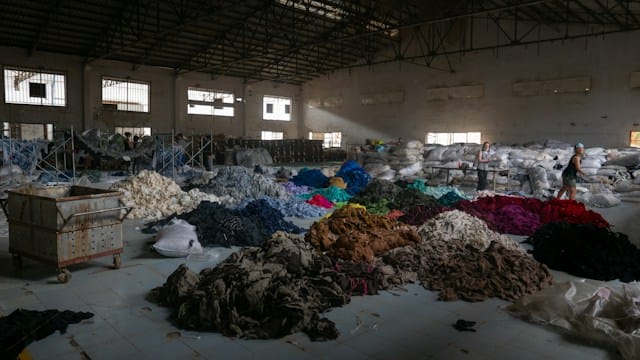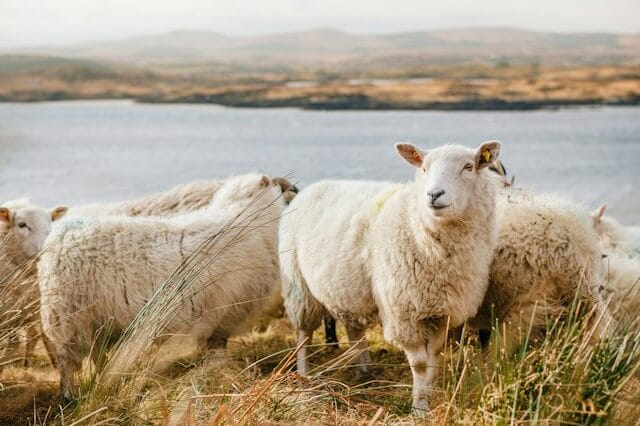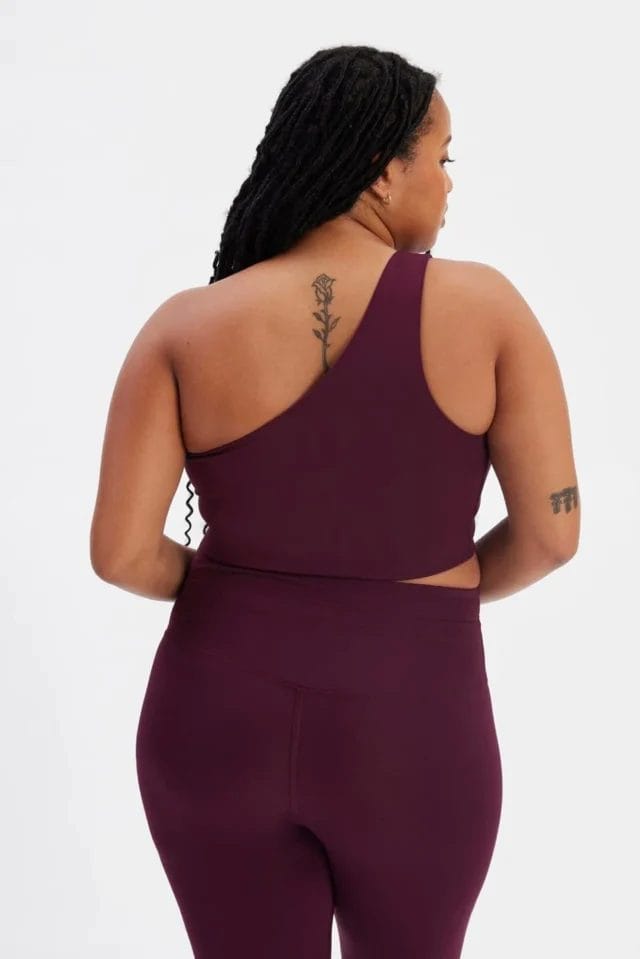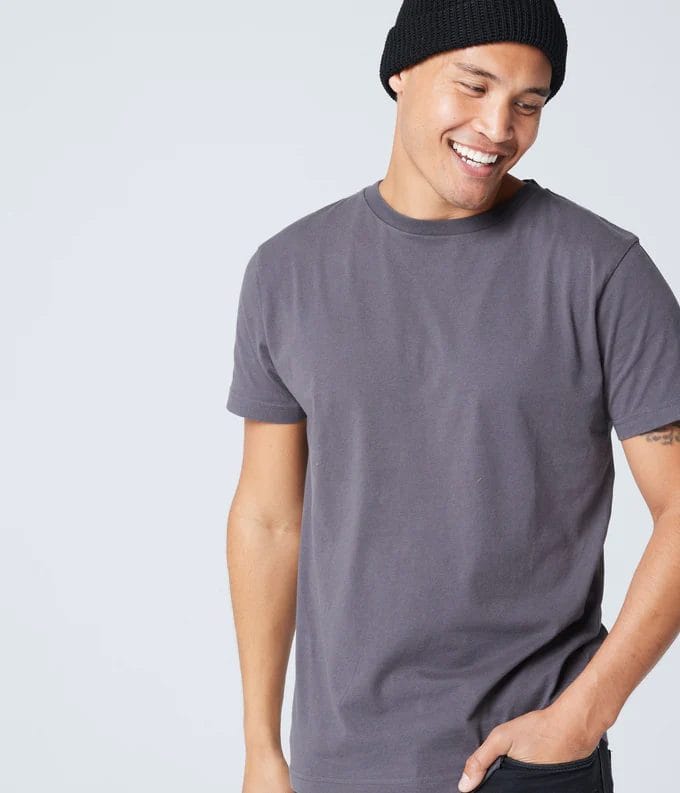
Eco-Stylist is reader-supported. If you make a purchase using our links, we may earn a commission. We only feature fashion brands that pass our sustainable brand criteria. Learn more here.
Hollister is a popular brand renowned for its fashionable yet economical items. This American fashion retailer has gained immense success as one of the leading players in the fast fashion industry by offering a wide range of clothing and accessories. This fast fashion retailer may not seem as popular as its competitors, such as Forever 21, Bershka, or Urban Outfitters, which might make it look like less of a fast fashion label.
Unfortunately, that’s completely wrong. Countless disputes and discussions have been over how environmentally-friendly Hollister’s practices are and whether their products can be truly called ethical.
Hollister is indeed no different from any of those fast-fashion brands. From their dark past of being non-inclusive and having discriminatory beauty standards to the lack of transparency when it comes to their labour conditions, all the way to the minimum effort on materials sourcing, their practices can hardly be called sustainable.
Is Hollister fast fashion? How sustainable is Hollister?
Hollister is a popular fashion brand, particularly by teenagers who crave the latest fashion trends. They are definitely fast fashion, as was noted in the spring of 2014 when the media reported that the once-struggling surfing-themed brand changed its sourcing strategies into the fast fashion business model.

Hollister quickly jumped on the wagon to compete with the likes of Zara, H&M, and Forever 21, to avoid a financial meltdown. One of their earliest strategies was cutting the cost of their items to set them apart from their parent brand, Abercrombie & Fitch. In line with this, the newly appointed chairman, Arthur Martinez, started working with their West Coast vendors to develop a faster and more responsive supply chain.
A strategy consistent with what Hollister offers: trendy clothes at an affordable price point – with new pieces made available every couple of weeks or so. Their regular sales push shoppers to purchase new items rather than opting for something with a longer lifetime – this makes them part of an unsustainable shopping cycle. So far, there has been no evidence that Hollister intends to leave their current sourcing model.
Whoever says Hollister is an alternative, sustainable fashion option to other high street brands is probably deceived by the marketing tactics and pricing that try to separate Hollister from the typical high street brands. Let’s dig into their practices to find out why.
Their sustainability efforts: Let’s talk about materials
You can find some group-level information on the Abercrombie & Fitch Co group sustainability page. However, assessing Hollister’s measures at the brand level is a struggle, as their website could have provided more detailed information. Hollister indeed mentions some of their achievements independent of their parent company, Abercrombie & Fitch.
Looking into what materials Hollister uses in clothing makes it clear they don’t use very much sustainable fabrics, much like other fast fashion brands. They aim to make 25% of their cotton BCI Cotton (i.e. Better Cotton) and 25% of their polyester recycled by 2025.
However, this still puts them well below having 50% of their fabrics sourced more sustainably. In addition, these 2 fabrics are the most basic entry points for a fashion brand; they don’t demonstrate a strong commitment to sustainability.
If you want to explore more about sustainable fabrics, we’ve got you covered: A Guide to the Most and Least Sustainable Fabrics.

Denim
Hollister has a separate sales page for denim on their website, and their stores are dominated by denim. The curvy collection is one of their best-selling products as the fit is tricky to find in other high street brands at such price points.
Unfortunately, denim is infamous for being a thirsty material. As quoted in Fashion Revolution, according to Levi Strauss, 3,781 litres of water are used during the production and use phase of one pair of 501® jeans, and 33.4 kg of CO2 is created throughout its lifetime. These shocking numbers make us wonder if a pair of jeans made with a conventional technique is worth all the environmental impact!
Hollister reported using 30% less water by 2022, or about 190,300,000 less gallons of water, in their total denim production than their 2019 target. They use efficient dying and washing methods to achieve this number, which is close to 720 million litres of water, or about 190 thousand jeans, according to Levi’s. The A&F Co. stated they used the Jeanologia Environmental Impact Measuring (EIM) to develop this figure.
This is definitely a start, and they aim to reduce 30% of water use again by 2028. This number seems to have come out of nowhere, and we can’t find a justification for why they are only reducing it by 30%. If they, for example, become one of the signatories of Textile 2030 in the UK, or perhaps other similar initiatives, we probably would get a clear definition of how they came up with these figures.
And also, what about other essential goals like using 100% sustainable materials or sourcing their denim ethically? They seem to miss that part!
Recycled polyester
Hollister seems to be trying to give off the impression that they are not polyester fans. They say landfills are trashy because of polyester. That’s why by 2025, they will strive to source 25% recycled polyester, with the current recycled polyester already being used to fill puffers and parkas.
As we all know, polyester is a synthetic material derived from petroleum, and thanks to its versatility and affordability, it has become the dominant material in the textile industry. Hollister must be aware of the environmental impact of polyester, which includes the high energy consumption and emissions to produce the materials, toxic dyes and chemicals, non-biodegradability, water use, and microplastic pollution. Unfortunately, it doesn’t stop them from completely removing its unnecessary use from their products.
Replacing polyester with recycled polyester does not completely address its environmental impact. As eco-friendly as it sounds, recycled polyester is at the edge of being problematic as it still may harm the environment. In theory, plastic bottles are better recycled back into plastic bottles than into fabrics as the quality of the polymer downgrades once it is recycled. Using recycled polyester for substantial items such as waterproof jackets would be less of an issue.
Unfortunately, Hollister blends polyester or mainly uses polyester in their loungewear, sweatshirts, and dresses–products that can be better off without polyester. It significantly reduces these items’ circularity and quality.
Cotton
It’s the same thing with cotton. Hollister is committed to sourcing 25% of their cotton from Better Cotton by 2025. Better Cotton is one of the leading global cotton sustainability programmes. Their goal is to safeguard and improve the environment while assisting cotton-growing communities in surviving and prospering.
As their market targets mostly teenagers, t-shirts, sweatshirts, and other casual items are at the heart of their sales focus. What does that mean? These items must be cotton-heavy, so the 25% target seems too convenient. If they combine Better Cotton with organic cotton in their sourcing strategy, there’s a good chance they could exceed or revise this target.
Come on, Hollister, you could do better!

Wool, down, and other animal-based materials
Something to be applauded is that since 2020, they have used 100% responsible down in all jackets and coats. This is a goal they had accomplished 5 years earlier than their target. The Responsible Down Standard (RDS) is currently the most reliable down certification. According to Textile Exchange, RDS recognises companies that set the standard for the humane treatment of ducks and geese in the down and feather industry.
Speaking of animal welfare, no documents mention their acknowledgement of the 5 freedoms of animal welfare. The animal welfare policy instead lists which animal-based materials they won’t use, including angora, real animal fur, pig leather, and non-mulesed wool. They also list preferred certified animal-based materials such as RDS and Responsible Wool Standard (RWS).
While they achieved their RDS target, Hollister’s customers must be enthusiastically waiting to hear how they track the 100% certified RWS target in 2025, as there have been no updates since 2019. That means we have no idea about the traceability of their current wool products. How do we know if Hollister’s non-certified wool is not obtained from mulesing practice?
Indeed, the animal welfare policy could be further improved. For example, the policy doesn’t mention leather or exotic animal skin. There are indeed a few leather belts on their website, yet there is no mention of their leather in the policy or report—where is it sourced from? What is the tanning process like? Will they plan to add certified leather to their animal welfare policy?
Perhaps it will happen later? A&F Group aims to source audited and traceable bovine-leather from deforestation-free and/or conversion-free areas by 2030. They only set the target this year in 2023, and we are yet to see policies and implementation come to progress.

Viscose
By 2025, Hollister plans to source 50% of their Manmade Cellulosic Fiber (MMCF) through diligent supply chain tracking and partnership with Canopy to protect ancient and endangered forests. It is, however, unclear how far they are towards the 2025 target as this brand has not disclosed or tracked their progress since 2019. They also do not address other environmental issues that MMCFs typically generate, such as large amounts of water and energy needed as well as highly intensive chemical processes, as we haven’t seen ecologically innovative materials such as LENZING™ ECOVERO™ mentioned in their target.
Their sustainability efforts: Recycling and circularity?
On Earth Day 2020, A&F Co. announced its partnership with thredUP, the world’s largest fashion resale marketplace. Customers can send any brand of gently used women’s and children’s clothing to thredUP, and the garments will then be “re-commerced” on thredUP’s site. Once the garments have been sold on the thredUP platform, customers will earn gift cards for future purchases while helping keep clothing in use and out of landfills.
Or so they thought? Such a practice removes the essence of circularity and motivates customers to purchase more! There will definitely be more possibility of more clothes ending up in landfills given the short nature of trends they are imposing and non-durable garments that they produce.

Does Hollister work with fair labour practices? Is Hollister ethical?
To begin with, Hollister refused even to sign the Bangladesh Accord on Fire and Building Safety, created to prevent disasters like the collapse of the structurally unsound Rana Plaza factory in 2013, which caused over 1100 deaths, mostly garment workers. Such incidents exposed the problems facing the garment industry to the public. The parent brand Abercrombie & Fitch was also called out in a 2018 report entitled “Labour Without Liberty” for sourcing garments from factories where workers are subjected to modern slavery conditions.
The parent company released the Vendor Code of Conduct in response to the callout of benefitting from the Uyghur unethical factories in 2018, which should be adhered to by the factories they work with. To verify Vendor Code compliance, A&F carries out third-party audits before starting any new production and annually, if necessary.
In 2022, Using samples of products from 20 of their top mills—which account for over 80% of the cotton used in their fabrics—A&F Co. used Oritain’s forensic services to confirm the country of origin of the cotton used in their products. They discovered that the cotton used in their products was unrelated to regions where forced labour may be practised extensively.
The A&F Group does update their Tier 1 Factory list annually and has edited 100% of its Tier 1 cut & sew factory audit. Indeed, they do publish the name of the factory, the address, the city, and the number of workers. Unfortunately, customers are left wondering how each audited factory performs regarding fair practices, a safe environment, living wages, and other factors mentioned in their vendor code of conduct. Because, at the end of the day, the rights and well-being of the workers in its supply chain are what matter the most!
Sadly, there is no mention of moving forward to their Tier 2 suppliers despite having mapped their Tier 1 factories. Tracing their raw materials might be a struggle since A&F Group’s certified traceable materials are very limited in quantity, and ambitious targets will be highly necessary.
While the intention of this policy is directed to more ethical practices, the lack of transparency of their Tier 2 factories and other raw materials, such as their wool and viscose, which could be linked to deforestation or unethical practices, could still be further addressed.
In addition to the above problems, Hollister provides no evidence or plan to pay their clothing makers living wages. Thus, we can confidently say this is not an ethical brand.

What about their environmental impact?
A&F Co. submits an annual report to the Carbon Disclosure Project (CDP). This independent non-profit organization offers businesses and cities a global framework for measuring, disclosing, managing, and exchanging environmental data. The company aims to reduce Scope 1 and 2 emissions by 47% in 2030; by the time this article is written, they have reached 38%.
However, bear in mind that the supply chain and distribution emissions do not belong in Scope 1 nor 2. They belong in Scope 3, which is notoriously complicated to calculate and estimate without well-established transparency. A&F Co. has not set a target for the Scope 3 emission reduction, even though they admit that purchased goods and services, one of the Scope 3 categories, which take into account all their suppliers, are the greatest contributor to their carbon footprint.
The company just started to target using 50% recycled water by increasing the amount of recycled water in both denim laundries and mills in 2023. They are aiming to achieve this by 2028. This is good but seems a little behind, considering other fashion labels had done it earlier, and we don’t see how comprehensive this target is with the 30% water consumption reduction target in their denim production that we mentioned previously.
In addition, they require their denim washhouses to use the Zero Discharge of Hazardous Chemicals (ZDHC) guideline to ensure that discharged wastewater does not pollute the environment. A&F Co. conducted a wastewater test program in their garment dyehouse and fabric mills. Factories’ level of conformance will be rated based on the test results, and they need to submit a corrective action plan if any parameters are detected to exceed the limit.
So, another question remains: Customers are also curious about how they perform because the report is not publicly available.
Final verdict
TLDR; Hollister falls far short on ethics and sustainability. While they have some goals and projects, which they promote heavily, compared to the brands we certify, it’s as if they’re hardly doing anything at all.
Hollister is indeed a fast fashion brand, and such a business model will not be in their favour to achieve ethical and environmentally responsible goals. Indeed, as mentioned in the 2023 Fashion Transparency Index, Hollister was among the major brands reviewed in 2022 that had since disclosed some of their processing facilities for the first time, and that tremendously increased their ratings even though they scored relatively low. In the overall “know, show, and fix” score, Hollister scored 21%, together with Abercrombie & Fitch, and retailers that are among the worst fast fashion brands to avoid, such as Pretty Little Thing and boohoo, as well as other retailers such as Amazon and Target.
Transparency is not equal to sustainability, and Hollister is still far away from that goal. Their sustainability initiatives and partnerships seem premature and basic, even though they provide great reports here and there. There are still some gaps in their materials choices, supply chain, and policies that many fast fashion brands have that need addressing.
It looks much more plausible that these values serve simply a bare minimum requirement instead of an environmentally proactive attitude towards improvement across all parts of its business model. We expect more ambition in terms of setting a target and reporting their progress. Playing safe could be the best way to phrase it?
Hollister is in fact, among the least sustainable fashion brands on our radar. Read more about the Worst Fashion Brands to Avoid at All Costs.
Where to find eco-friendly alternatives to Hollister
Teenage girls and youngsters, of course, want to wear stylish outfits that are also ethical and sustainable. In our directory, we rate and classify brands for Transparency, Sustainability, and Fair Labor. You can find alternatives to stylish hoodies, sweatshirts, and track jackets by looking and filtering through it. Supporting these sustainable clothing brands will indeed make you feel great and save your finances in the long run!
Our Top 4 Sustainable Alternatives to Hollister

Pact Apparel, for example, offers various sweatshirts made of GOTS-certified materials at relatively more affordable price points. Some Hollister’s hoodies are not yet Better Cotton certified, making Pact a great sustainable clothing alternative. Pact is known for its comfort, softness, and reputation as Earth’s Favourite Clothing, thanks to its advocacy of organic cotton. What’s even better is that their products are made in Fair Trade factories!
We have another list of extensive sustainable sweatpants brands to support your passion for sustainable clothing!

Girlfriend Collective offers similarly beautiful options, especially if you are looking for beautiful colorful leggings with a slightly higher budget–but we promise their quality is impeccable! Its reputation for being body-positive is evidenced by models of various sizes and races, hence less doubt on inclusivity. Girlfriend Collective is also an example of recycled polyester done better, as most sports apparel is made from man-made materials anyway.

Known Supply is another brand to look out for if you are looking for basic t-shirts. If transparency and traceability are higher on your priority list when it comes to ethical practices, look no further. Each garment is signed by the maker, enabling the customers to “meet the maker” on their website. That’s a good sign of slow fashion!

Last but not least, if you claim denim is a part of your DNA, Outerknown is perfect for you. Their jeans are all about circularity too, thanks to a lifetime warranty on their SEA jeans. This means you could repair, replace, or recycle each pair returned to them.
Which brands should we review next? Let us know in the comments!
Mariana previously worked in various sustainability and climate change research and consultancy projects in Indonesia and the UK. Currently working in the tourism industry, she wishes to gain more unique skills and meet different people from around the world.









